Gold has been a cornerstone of the human economy, a universal symbol of wealth and economic stability. Its rarity, beauty, and malleability have made it the ideal medium of exchange, used for thousands of years around the world. After more than 50 years of fiat currency dominance, gold may regain a central role in the global economic system.
This article briefly reviews the history of gold as a medium of exchange, looking at the people and events that defined its value and economic role.
Disclaimer:
The information provided does not constitute a solicitation for the placement of personal savings. The use of the data and information contained as support for personal investment operations is at the complete risk of the reader.
Contents
#1. Gold in Antiquity
Gold as a gift from the gods
Early civilizations, such as those of Mesopotamia and ancient Egypt, considered gold a divine gift. It was not used directly as money, but had a symbolic and ritual value. In ancient Egypt, the pharaoh hoarded gold to demonstrate his power.
By 3000 BC, gold had become associated with sunlight, and was used in temple decorations and royal sarcophagi. The Sumerian city of Ur, with its gold treasures found in royal tombs, is one of the earliest examples of a culture that placed economic and sacred value on this metal.
- Value of Gold: In 3000 BC, gold had no standardized monetary value, but an ounce could be exchanged for highly valuable items such as livestock or farm tools.
- Historical Detail: Goldsmithing in ancient Egypt reached extraordinary levels of refinement. Egyptian goldsmiths developed advanced techniques to create intricate jewelry and temple decorations.
The Lydians and the Birth of Gold Coinage
The first true gold coin was minted by the Lydians, a civilization in Asia Minor, around 600 BC. King Croesus, famous for his wealth, introduced gold coins that revolutionized trade, simplifying exchanges and creating trust among merchants. Croesus’ coins were made of electrum, a natural alloy of gold and silver.
- Value of Gold : A Lydian gold coin could purchase a flock of sheep or a small plot of land. The value of an ounce of gold at that time was sufficient to finance a small business venture.
- Historical Detail : The introduction of gold coinage created a basis for international transactions, promoting trade between the city-states of Ionia and the eastern Mediterranean.
#2. Gold in Ancient Greece and Rome
Alexander the Great and the Expansion of Gold
During the conquests of Alexander the Great (4th century BC), huge quantities of gold were collected from Persian treasuries and used to mint coins. Gold became a universal medium of exchange in the conquered territories.
- Value of Gold: A gold drachma could pay a soldier’s wages for several weeks or be exchanged for a generous amount of wine and olive oil.
- Historical detail: Alexander used gold not only to finance his military campaigns, but also to build temples and monuments in honor of the Greek gods, consolidating his power.
Gold in the Roman Empire
The Romans developed an economic system based on gold. The aureus, a gold coin first minted under Julius Caesar, was accepted throughout the Empire. Gold reserves were used to finance legions and build infrastructure.
- Value of Gold: One gold aureus could buy a horse or finance a festival for an entire community. In modern terms, the aureus had a purchasing power equivalent to thousands of dollars.
- Historical Detail: The sacking of Jerusalem in 70 AD by Titus brought enormous quantities of gold to Rome, which was used to build monuments such as the Colosseum.
#3. Gold in the Middle Ages
Gold and the Crusades
During the Middle Ages, gold lost some of its role as a medium of exchange due to scarcity, but it remained crucial in financing the Crusades. Knights used gold coins to purchase weapons and supplies.
- Gold Value: One gold florin could purchase a full suit of armor.
- Historical detail: The Crusades brought large quantities of gold to Europe, taken from conquered territories or obtained through trade with the Middle East.
The Italian city-states
Florence and Venice introduced gold coins such as the florin and the ducat, which became the standard for international trade.
- Value of Gold: One gold florin was enough to purchase luxury goods such as silk and spices.
- Historical detail: Florence’s economic success was largely due to its banking system, which relied on the use of gold reserves to secure loans.
#4. The Age of Exploration
The Gold of the New World
The discovery of the Americas brought huge amounts of gold to Europe, changing the global economy. Spanish conquistadors plundered the treasures of the Aztecs and Incas, fueling inflation and increasing international trade.
- Value of Gold: An ounce of gold in the 16th century could finance a maritime expedition or be exchanged for very high-value goods.
- Historical Detail: Spain used American gold to finance wars in Europe, but inflation from the excess of precious metals destabilized many European economies.
Gold and Pirates
West Indian pirates attacked gold-laden Spanish galleons, making gold the most coveted loot of the period.
- Gold Value: A chest of gold could provide enough riches to maintain an entire fleet for years.
- Historical Detail: Legends such as that of Blackbeard and the treasure of Port Royal still fuel the collective imagination of pirate gold today.
#5. Gold in the Industrial Revolution
The Gold Rush of the 19th Century
The discovery of gold deposits in California (1848), Australia (1851) and South Africa (1886) triggered a veritable gold rush. Thousands of people migrated to these regions hoping to strike it rich. Entire cities sprang up around the deposits, transforming the economic and social landscape.
- Value of Gold: During the California Gold Rush, an ounce of gold was worth about $20, enough to purchase quality farm tools or support a family for months.
- Additional Detail: The Gold Rush also influenced popular culture, inspiring stories of adventure and myth, many of which survive today in literature and film.
- Insight: One of the most significant episodes of the Gold Rush was the creation of San Francisco as an economic center. In a few years, the city transformed from a small village to a metropolis, thanks to the flow of wealth from gold mining.
Gold and the gold standard
In 1870, many of the world’s major economies adopted the gold standard, a system that guaranteed currency stability by tying the value of national currencies to gold reserves. This system promoted international trade and reduced inflation, but required a constant accumulation of gold to maintain economic stability.
- Value of Gold: Under the gold standard, an ounce of gold had a fixed value of approximately $20.67 in the United States, a price that remained stable for decades.
- Additional Detail: The gold standard helped establish the British pound as the dominant currency of international trade, thanks to the huge gold reserves held by the Bank of England.
- Historical Episode: In 1896, the discovery of new gold deposits in the Yukon, Canada, gave rise to the “Klondike Gold Rush.” Thousands of adventurers braved extreme conditions to reach these remote mines, changing the economic destiny of the region.
#6. Gold in the 20th Century
The Great Depression and the End of Gold Standard
During the Great Depression of the 1930s, many countries abandoned the gold standard in an attempt to stimulate their economies. In the United States, President Franklin D. Roosevelt issued Executive Order 6102 in 1933, which required citizens to hand over nearly all of their gold holdings to the government in exchange for paper money.
This marked a paradigm shift: gold lost its central role as money, but retained its status as a store of value.
- Value of Gold: In 1934, the official price of gold was set at $35 an ounce, an increase from the previous value to encourage the accumulation of gold reserves.
- Additional Detail: Despite the abandonment of the gold standard, many central banks continued to hoard gold to protect themselves from economic instability.
- Historical Background: Fort Knox, built in 1936, became the main repository of U.S. gold reserves, a symbol of the country’s economic power.
Gold during World War II
During World War II, gold played a crucial role. Many countries moved their gold reserves to safe places to prevent them from falling into enemy hands. Switzerland, neutral during the conflict, became an important trading center for gold.
- Gold Value: The price of gold officially remained stable at $35 an ounce, but its real value increased due to growing demand and supply constraints.
- Additional Detail: Gold was also used to finance war efforts, with huge amounts transferred between allies to purchase weapons and resources.
- Significant Event: In 1944, the Bretton Woods agreements established a new global economic system, in which the U.S. dollar was directly convertible into gold, cementing the United States’ role as a world economic power.
#7. Gold in the Modern World
The End of Gold Standard and the Free Gold Market
In 1971, President Richard Nixon ended the convertibility of the dollar into gold, marking the end of the gold standard. From that point on, the price of gold was determined by the market, leading to significant volatility.
- Gold Value: In 1980, the price of gold reached an all-time high of $850 an ounce, driven by inflation and geopolitical tensions.
- Additional Detail: Gold became a popular investment asset, considered a “safe haven” in times of economic and political crisis.
- Insight: During the oil crisis of the 1970s, gold saw a surge in demand, cementing its role as a hedge against economic uncertainty.
Gold in the 21st Century
In the 21st century, gold has continued to maintain its status as a safe haven. The 2008 financial crisis led to a surge in demand for gold, with the price reaching $1,900 an ounce in 2011.
Today, gold is used not only as an investment, but also in industries such as electronics and medicine, due to its unique properties.
- Gold Value: In 2023, the price of gold ranged between $1,800 and $2,000 an ounce, reflecting its importance as a store of value.
- Additional Detail: Countries like China and India continue to accumulate gold, seeing it as a hedge against global market volatility.
- Recent Event: With the COVID-19 “pandemic” and global economic uncertainty, gold has seen a renewed surge in demand as a tool for financial stability.
#8. Gold’s return to the stage
Gold, a symbol of stability and wealth for millennia, could return to the center of the global financial scene at a time when the world is facing profound transformations. In an era marked by geopolitical instability, “climate change” and market volatility, the precious metal reemerges as a lifeline for governments, central banks and investors.
With inflation eroding the purchasing power of traditional currencies, gold stands out as a reliable store of value, capable of weathering crises without losing its protective function. Fears related to the fragility of the global economic system, amplified by “pandemics”, conflicts and trade tensions, increase the demand for safe haven assets such as gold.
The central bank gold rush is a clear sign of this trend. Countries like China and India are accumulating gold reserves to diversify their assets and reduce their dependence on the US dollar. This shift toward a more multipolar economic system could revive gold as a benchmark for international monetary stability.
At the same time, technological innovation is offering new opportunities for gold, with cryptocurrencies pegged to the precious metal that combine the security of blockchain with the intrinsic solidity of gold.
The private sector is also looking at this resource with renewed interest, while awareness of the risks associated with traditional investments is growing. The energy crisis, alleged climate change and the debate on responsible mining are pushing for greater attention to ethically produced gold, responding to the demand of a market increasingly oriented towards sustainability.
Gold, tangible and universal, not only protects against economic instability but also offers a bridge between the past and the future, intertwining its millennial history with the challenges of an ever-changing world.
Its potential return to the center of global finance is not just an economic issue, but also a cultural one. In a digital and often immaterial world, gold represents a tangible and enduring value, a symbol of security that speaks to all civilizations, across the centuries.
#9. Bitcoin’s stage
Bitcoin, celebrated as the symbol of a financial and technological revolution, may actually be a brilliant distraction, akin to actors commanding attention on a stage while the real drama unfolds behind the scenes.
With its allure of decentralization and promise of economic freedom, Bitcoin has monopolized some public debate, driving millions to focus on its price fluctuations and narratives of a future without central banks. However, just as global attention is fixated on the cryptocurrency market, there are much more powerful and influential forces at work behind the scenes that are often overlooked.
While Bitcoin is being touted as a bulwark against institutional control, financial institutions themselves are finding ways to integrate cryptocurrencies into their systems, consolidating their power.
Central banks are developing their own digital currencies (CBDCs), tools that could completely redefine monetary control, giving governments unprecedented insight and influence over global financial flows. The hype around Bitcoin serves, perhaps unwittingly, to distract from building a different financial infrastructure.
Furthermore, Bitcoin, with its high energy consumption and concentrated “mining” in a few areas of the world, risks not being the symbol of economic equity it claims to be. Narratives about its transparency and accessibility ignore the profound inequalities in its ownership and use, creating an illusion of democratization that masks a consolidation of wealth and power.
Bitcoin embodies in the collective imagination the tension between the desire for economic freedom and the inevitable return to structures of centralized control. It is a compelling story, but it risks becoming a story that distracts from a more complex reality, where power has not been decentralized at all, but simply reorganized.
While the world follows the spotlight on this cryptocurrency, behind the curtain a financial future is being defined that could be completely different from what many expect.




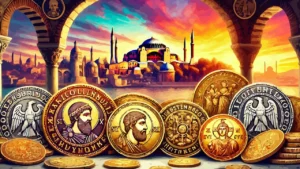
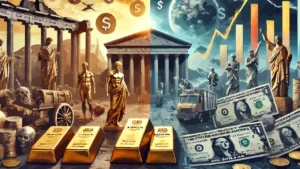
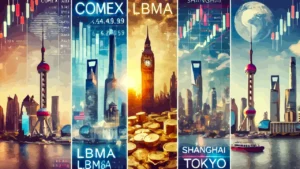
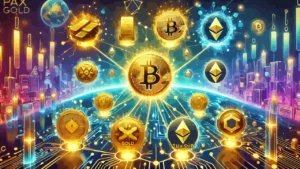


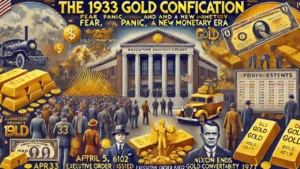
Leave a Reply